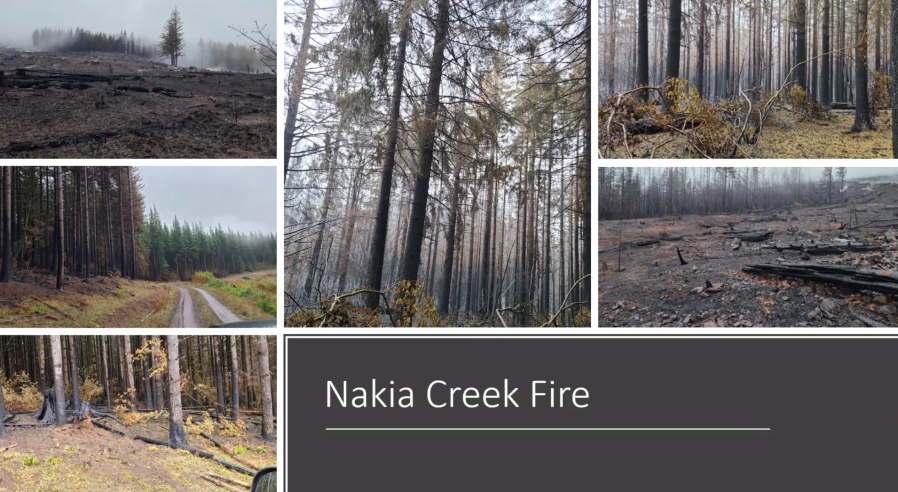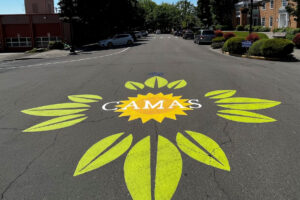Camas city officials learned this week that the city is still feeling the impacts of the Nakia Creek wildfire, which burned more than 1,900 acres near Larch Mountain northeast of Camas-Washougal in October 2022, and forced “go now” evacuations for thousands of Camas-Washougal area residents.
The city’s utilities manager, Rob Charles, told Camas City Council members during a Tuesday, Jan. 3, Council workshop the wildfire had burned through 800 acres of the city’s watershed on the south side of Larch Mountain.
“The city has a forest management plan to harvest and replant approximately 1,700 acres of land in the Jones and Boulder (creeks) watershed over a 40-year period,” Charles told the Council. “Due to the Nakia Creek Fire, approximately 568 of the affected 800 acres of burn-area trees should be harvested to ensure they don’t die, which would result in having no value to sawmills and becoming a larger liability.”
Trees impacted by wildfires typically must be harvested within a year of the fire to ensure the trees are not further damaged by insects or a lack of sustenance — and to reduce future wildfire risks — Charles told city officials Tuesday.
If the city did not harvest the fire-damaged trees in time to sell to sawmills, Charles said, the trees will eventually die and be the city’s liability.



